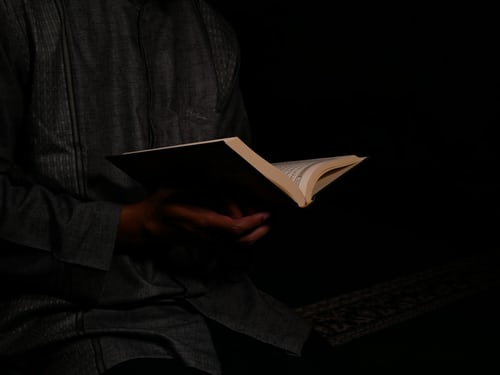Inspiring Older Readers
 posted on 07 Aug 2018
posted on 07 Aug 2018
The Bonfire of the Vanities by Tom Wolfe
If such a thing as the “great novel of the 80s” exists – the greed and excess and conspicuous consumption of that decade laid bare – many I think would point to Tom Wolfe’s The Bonfire of the Vanities, the story of “master of the universe” Sherman McCoy, highest-producing bond trader at Pierce & Pierce (but going broke on a million dollars a year) and his downfall. What prompts this downfall – this flamboyant punishment of hubris – is a momentary loss of direction one night as McCoy collects his mistress from the airport and instead of arriving swiftly and safely back in “white Manhattan” finds himself, his lover and his new Mercedes on a desolate debris-strewn slip road in the South Bronx, the events that unfold lit by the acrid chemical glow of overhead sodium lights.
Rereading Jay McInerney’s Brightness Falls – another novel of the “yuppy decade” – prompted me to see how well Tom Wolfe’s biggest novel had withstood the test of time.
The aim of Wolfe’s novel is to use the events surrounding McCoy’s downfall to show us the institutional underbelly of New York – a corrupt, cynical and broken system in which even if the right thing is done it is likely to be done for the wrong reason, a sort of yuppy nightmare in which neither wealth nor “insulation” nor all the trappings of the money-no-object good life offer quite enough protection against the hand of fate or the furies of street justice. Its indebtedness to the social satire of Dickens and Thackeray is evident, and like the Victorian masters it was first published in fortnightly installments (in Wolfe’s case, in Rolling Stone magazine).
It is also worth emphasising that this was Wolfe’s first novel. While he had written the occasional short story before his reputation up to that point (1987) rested primarily on his non-fiction – a somewhat lurid version of the New Journalism form that he had helped to invent. And generally speaking, that journalism has not dated well. It is its style that is its biggest downfall – its over-emphasis, its gimmickiness, the attempt (or so it always seemed to me) to write a sort of prose equivalent to Roy Lichtenstein’s Pop-Art cartoons. The titles alone – The Kandy-Kolored Tangerine-Flake Streamline Baby, Radical Chic & Mau-Mauing the Flak Catchers, The Electric Kool-Aid Acid Test, to name just three – give a very good indication of Wolfe’s curious and rather time-locked style.
Sadly, The Bonfire of the Vanities has the same weaknesses but conducted at exhausting length. The ostensible excitement (at times hysteria) of the prose wears very thin indeed. Rather than pumping energy in, Wolfe’s manic style seems to suck energy out and the greater the emphasis, the more inert the story becomes. It is immensely repetitious and the characters are little more than cardboard cut-outs that Wolfe slides around furiously as the plot demands. I found myself skimming increasingly long stretches simply to get to the next point at which the story moved demonstrably forward. It sometimes feels as if one has entered a vast and sprawling mansion built entirely from the cheapest and shoddiest materials – from whatever will provide the greatest height and bulk.
Those are weaknesses for which Wolfe can legitimately be blamed. But the novel has also been undermined in other ways too. For the truth is, while Wolfe thought he was making a definitive statement about the greed and self-entitlement of the 1980s, all the 80s were really doing was ushering in a triumphant, neoliberal hyper-capitalism that would establish itself not just as the primary condition of the marketplace but of the global socio-economic order. Consequently, The Bonfire of the Vanities now seems merely of its time, the excesses it seeks to depict tame and out-of-date – greedy, certainly, but hardly worth a commentary of over 700 pages.
Ultimately history has dwarfed what Wolfe had to tell us and what should have been his era-defining masterpiece now in many ways looks as vain-glorious as its subject. This is doubly frustrating because the novel is studded richly with acute social observation that remains enduringly true and sometimes very funny – but this now seems thin reward for such a large book.
Alun Severn
August 2018